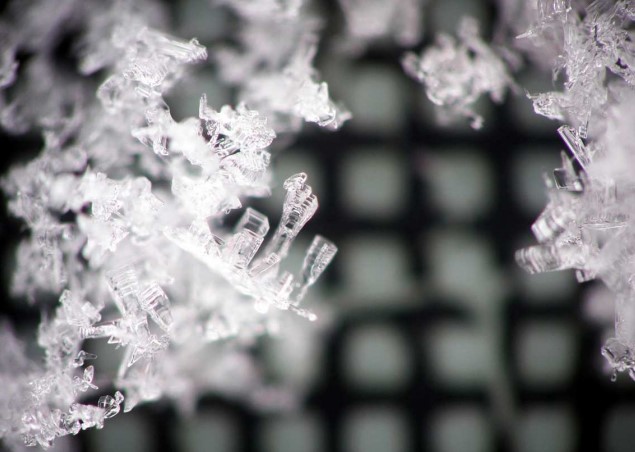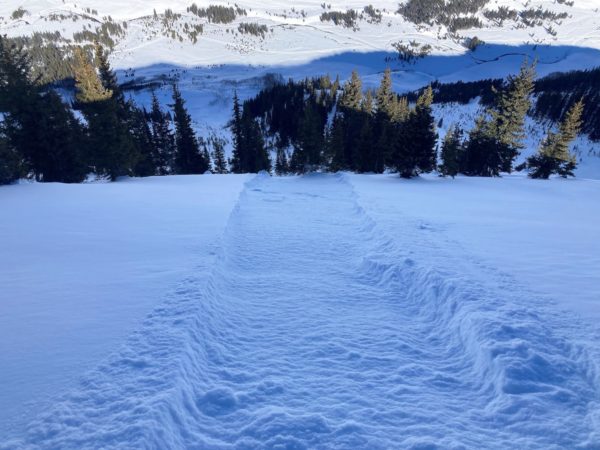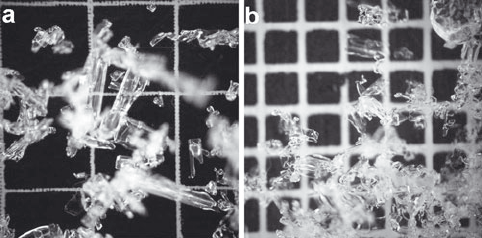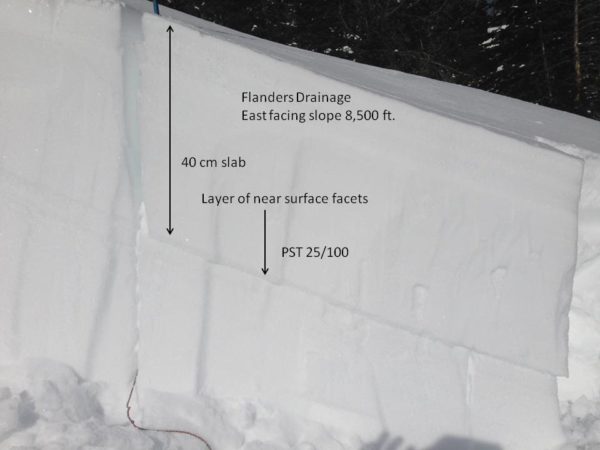Faceted weak layers that form in the upper snowpack before burial.
The nomenclature can lend itself to confusion. Near-surface facets form near the snow surface, but they can be buried and persist as a weakness at any depth in the snowpack. Thus, they are the culprit in many persistent slab avalanches. Near-surface facets form from strong temperature gradients at the snow surface. Faceting at the snow surface is common during prolonged dry spells when the snow surface experiences large temperature swings between sunny days and cold, clear nights. This facets the snow into softer, weaker snow that doesn’t bond well with surrounding snow layers. In layman’s terms the weakening snow surface is often called “recycled powder.” Once buried, near-surface facets can persist for a long time, often weeks or months, especially if they are associated with a crust. Near-surface facets are typically smaller and less developed than their basal facet counterparts, lending to a relatively shorter lifespan. Their smaller size also makes them more difficult to spot with the naked eye in a snow pit. Near-surface facets can sometimes be destroyed by sun, rain, or wind, or their growth can be inhibited by denser wind-packed snow grains at the surface. Thus, the distribution of a buried near-surface facet layer can vary across terrain.



